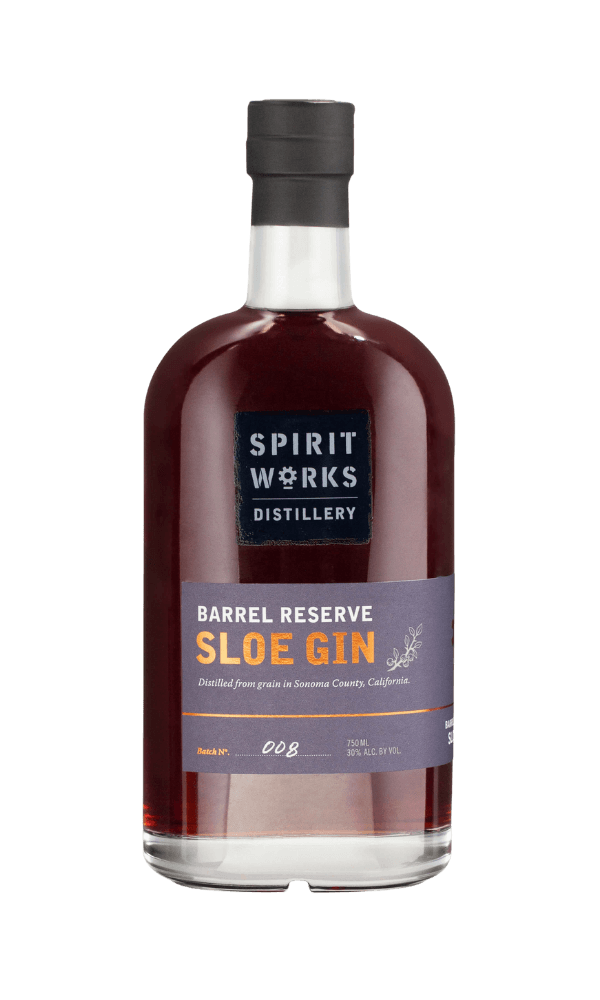Sloe Gin: Why Britain's Traditional Christmas Tipple is Worth Another Look
"Sloe berries" by Jon Mountjoy is licensed under CC BY 2.0
The sloe gin story starts in the hedgerows and thickets of the British countryside. Sloe berries are the sour, blue-black fruit of the thorny blackthorn shrub, a member of the rose family. These tiny, astringent plum-like fruits get harvested each autumn at first frost, and folks macerate them for a few months in jam jars with London dry gin and sugar for a few months, then the tart-sweet liqueur gets sipped neat after dinner by firesides all over Great Britain, especially around the holidays.
Bringing Back Sloe Gin
Somehow this Victorian romance got lost in translation, causing thousands of unsuspecting youths to imbibe questionable cocktails like the sloe gin fizz and the slow comfortable screw. Luckily, authentic versions of the craft distilled spirit are coming back, and producers like Plymouth, Sipsmith, and 6 O’clock offer artisan-made sloe gin in their product ranges. As Amy Stewart says in the Drunken Botanist, “It took a renewed interest in wild, local, seasonal fruit to bring the sloe back from obscurity.”
We asked Michael Kain, Head Distiller at the UK’s 6 O’clock Gin to explain the origins of the spirit. 6 O’clock makes an elegant, cranberry-colored, dry sloe gin, in the tradition passed down from his father, Edward, who farmed fruit and made liqueurs in Thornbury in Southwest England. “It would have been something that an elderly relative may have made, but these days people are more interested in foraging fruits…and preserving fruits,” creating what Kain dubs a “fruit gin renaissance.”
“We make it just like you might at home, we just have bigger tanks,” says Kain. Wild harvested sloes are foraged in Balkan forests, then the fruit is frozen for transport, “which means you get a much better color extraction from the skin, plus it breaks down the flesh of the fruit so you get better flavor.” The sloes steep with sugar and London dry gin for 6 months to get ideal flavor extraction with no musty or oxidized flavors, and the spirit is bottled at 26% alcohol.
How to Enjoy Sloe Gin
Like his father, Kain likes the spirit neat, or from “a hip flask if you are going for a walk with the dogs in the countryside.” But the rich, herbal, fruity liqueur works very well in winter cocktails too.
In 2019, Sipsmith published a cocktail book called Sip, which includes instructions on how to make your own sloe gin, should you find yourself with a harvest, plus a wonderful recipe for Hot Mulled Sloe made with hot apple cider and mulling spices. Gary “Gaz” Regan’s 2015 book “The Negroni” offers two versions of the classic drink featuring sloe gin, including Mauro Mahjoub’s Negroni Futurista which also subs fino sherry for the vermouth, but Kain suggests a different twist. “I like to make a negroni and switch out the Campari for sloe gin. It’s not really a negroni but it’s quite a nice drink!”
American Sloe Gin
While sloes aren’t grown commercially in the US, sloe gin is made in America. At Spirit Works, they make both sloe gin and a barrel reserve sloe gin. Both are made from a family recipe and organic sloe berries sourced from Europe. Spirit Works owners Timo and Ashby Marshall recommend using sloe gin in cocktails and as a replacement for vermouth. The barrel-aged sloe gin is a unique product, aged for a few months in new, charred American white oak barrels and makes a terrific digestif.




